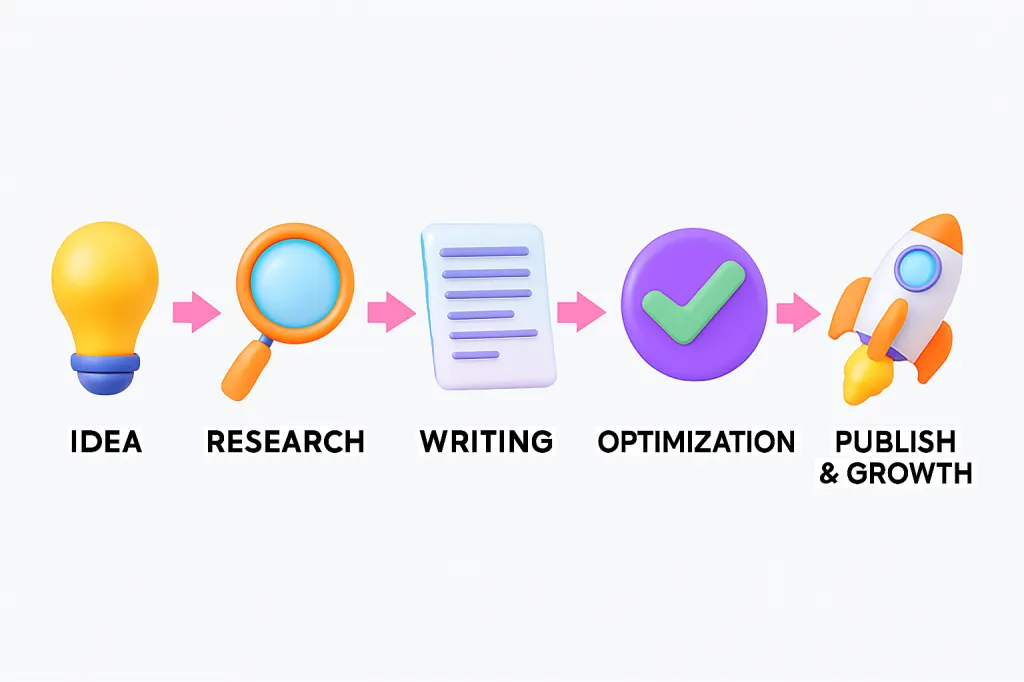How to Write an SEO-Friendly Blog Post: A 7-Step Guide
Creating excellent content is only half the battle. If no one can find it, even the most brilliant article is just a silent masterpiece. This is where Search Engine Optimization (SEO) comes in. Writing an "SEO-friendly" blog post means crafting your content in a way that is easily understood and valued by search engines like Google, which dramatically increases its chances of ranking high in search results.
This isn't about stuffing keywords or using robotic language. It's about blending the art of great writing with the science of search optimization. Follow this proven 7-step guide to create content that both your readers and search engines will love.
The 7-Step Framework for SEO-Friendly Content
Step 1: Master Keyword Research & Search Intent
Before you write a single word, you must understand what your audience is searching for and why. This is the foundation of any successful post.
- Keyword Research: Identify the primary term or phrase people use to find information on your topic. Use tools like Google Keyword Planner, or simply type your idea into Google and look at the "People also ask" and "Related searches" sections.
- Understand Search Intent: This is crucial. Why is the user searching for this keyword? Are they looking for information (e.g., "what is pdo"), a specific website (e.g., "facebook"), or to buy something (e.g., "buy web hosting")? Your content MUST match the user's intent to rank well.
Step 2: Plan Your Content Structure with Headers
Never start with a blank page. A clear outline makes your writing process faster and your final article more readable for both humans and search engine crawlers.
- Use one main H1 Tag for your article's title.
- Break down your main points into logical sections using H2 Tags.
- Use H3 Tags for sub-points within your H2 sections.
This structure creates a clear hierarchy that helps Google understand the key topics covered in your article.
Step 3: Craft a Compelling Title & URL
Your title is your first impression. It needs to be a hook that grabs attention in a crowded search results page.
- Optimize Your Title Tag: Keep it under 60 characters, include your primary keyword near the beginning, and make it intriguing. Adding numbers (like "7-Step Guide") or powerful words ("Complete," "Ultimate") can increase clicks.
- Create a Clean URL: Your URL (or "slug") should be short, descriptive, and include your keyword. For example:
/how-to-write-seo-blog-post/.
Step 4: Write Engaging, High-Quality Content
This is where you deliver value. Search engines are getting smarter at recognizing high-quality content.
- Write for Humans First: Use a natural, conversational tone.
- Keep Paragraphs Short: Aim for 2-3 sentences per paragraph to improve readability, especially on mobile.
- Use Keywords Naturally: Include your primary keyword in the first 100 words and then sprinkle it, along with related synonyms (LSI keywords), naturally throughout the text. Don't force it.
- Use Media: Add relevant images, videos, and infographics to break up text and increase engagement.
Step 5: Optimize Your On-Page Elements
While writing, keep these technical elements in mind:
- Meta Description: Write a 150-160 character summary of your post. Think of it as an "ad" for your article in the search results.
- Image Alt Text: Describe every image using the alt text attribute. This helps search engines understand the image and is crucial for accessibility.
- Internal Linking: Link to at least 2-3 other relevant articles on your own website. This helps Google discover more of your content and keeps users on your site longer.
Step 6: Add a Strong Call-to-Action (CTA)
What do you want the reader to do after they finish your article? Don't leave them hanging. Guide them to the next step.
- Ask a question to encourage comments.
- Suggest they subscribe to your newsletter.
- Link them to a related product or service.
- Encourage them to read another related article.
Step 7: Review, Publish, and Promote
Before you hit "publish," always proofread your article for any spelling or grammar errors. Once it's live, your job isn't done. Share your new post on social media, with your email list, and in relevant online communities to kickstart its visibility.
Writing an SEO-friendly blog post is a systematic process. By following these 7 steps—from understanding your audience's intent to optimizing the final details—you create a powerful asset that is positioned to attract organic traffic for years to come. Consistency is key, so use this checklist for every article you create.





